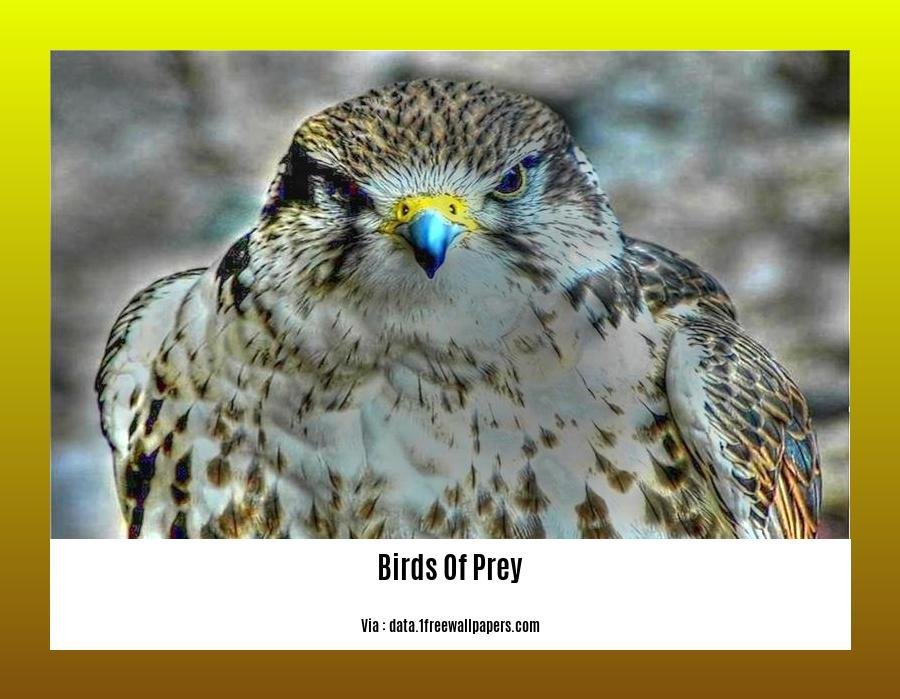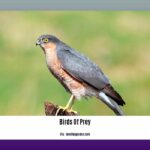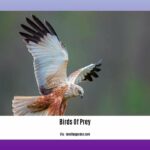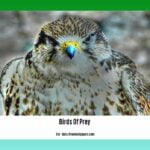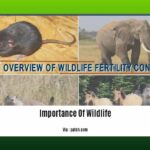Get ready to embark on a thrilling adventure through the captivating world of birds of prey in central Florida. In this article, we will immerse ourselves in the majestic realm of these magnificent creatures, exploring their behavior, ecology, and the crucial role they play in the region’s diverse ecosystem. From soaring hawks to stealthy owls, our wildlife enthusiast’s perspective will shed light on the fascinating lives of central Florida’s raptors, while also highlighting the challenges they face and the importance of preserving their habitats. Join us as we delve into the awe-inspiring world of these incredible creatures and discover why they truly deserve our admiration and protection.
Key Takeaways:
- Central Florida is home to a diverse range of birds of prey, including species such as the American Kestrel, Bald Eagle, Barred Owl, Black Vulture, Broad-winged Hawk, Cooper’s Hawk, Golden Eagle, Great Horned Owl, Peregrine Falcon, Crested Caracara, Mississippi Kite, Burrowing Owl, and Barn Owl.
- These birds play a vital role in the region’s ecosystem, demonstrating their importance in maintaining a balanced and healthy environment.
- Conservation efforts are crucial for protecting the populations of birds of prey in Central Florida and preserving their habitats.
- Unique environmental factors in the region can impact the populations of birds of prey, making it essential to understand and address these challenges.
- By appreciating and learning about the captivating world of birds of prey, individuals can contribute to raising awareness and supporting their preservation in Central Florida.
Birds of Prey in Central Florida
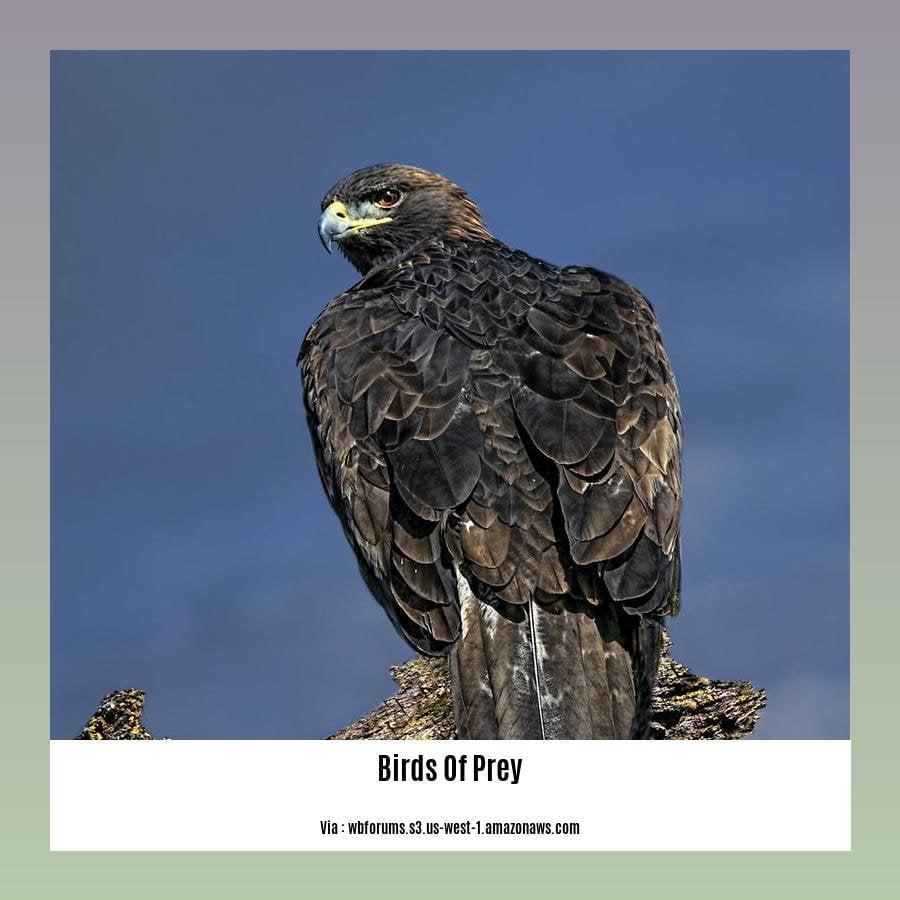
Central Florida is home to a diverse array of impressive raptors, captivating both locals and visitors with their majestic presence. From soaring eagles to stealthy owls, these birds of prey play a vital role in maintaining the delicate balance of the region’s ecosystem. Join me on a thrilling journey as we explore the fascinating world of birds of prey in Central Florida.
The Magnificent Hunters
American Kestrel: With its vibrant plumage and impressive hunting skills, the American Kestrel captivates all who are fortunate enough to witness its breathtaking aerial displays. As the smallest falcon in North America, this fearless hunter reigns supreme over its territory, preying on rodents and insects alike.
Bald Eagle: A symbol of strength and freedom, the bald eagle is undoubtedly a crowd favorite among bird enthusiasts. With its striking white head and powerful wingspan, the bald eagle commands respect as it soars above the serene lakes and rivers of Central Florida, effortlessly snatching fish from the water’s surface.
Barred Owl: As the sun sets over the peaceful swamps and forests, the distinct calls of the Barred Owl fill the air, enveloping the surroundings in an aura of mystery. With its piercing eyes and silent flight, this nocturnal hunter is a true master of disguise, blending seamlessly with the trees and unsuspecting prey beneath.
Black Vulture: Often misunderstood due to its scavenging habits, the Black Vulture serves a crucial role in the ecosystem, removing carrion and preventing the spread of disease. As it gracefully soars through the sky, its powerful sense of smell allows it to locate a meal from miles away, ensuring the cleanliness of the environment.
The Mighty Raptors
Broad-winged Hawk: As summer approaches, Central Florida becomes witness to one of the most awe-inspiring spectacles in the avian world. The broad-winged hawk embarks on an epic migration, forming kettles with thousands of its kind, swirling in the sky like a tornado of feathers. Truly a sight to behold!
Cooper’s Hawk: With lightning-fast reflexes and unparalleled agility, the Cooper’s Hawk is the epitome of stealth and precision. Its ability to maneuver through dense foliage in pursuit of small birds and mammals is nothing short of remarkable, earning its reputation as the “forest ghost”.
Golden Eagle: As a symbol of power and nobility, the golden eagle graces the skies of Central Florida with its presence. With its immense strength and keen eyesight, this apex predator reigns supreme over the open plains, swooping down gracefully to snatch its unsuspecting prey.
The Guardians of the Night
Great Horned Owl: With its piercing yellow eyes and characteristic ear tufts, the Great Horned Owl is the undisputed ruler of the night. This silent hunter takes advantage of its exceptional hearing and near-silent flight to ambush its prey, leaving no room for escape in the darkness.
Peregrine Falcon: Known as the fastest bird in the world, the Peregrine Falcon is a true marvel of nature. With speeds reaching over 240 miles per hour during its spectacular dives, this bird of prey is a formidable predator capable of taking down its victims in a blur of feathers.
Crested Caracara: Standing tall with its regal crest, the Crested Caracara is a striking sight indeed. This scavenging raptor reigns supreme over the open fields of Central Florida, commanding respect as it effortlessly soars through the sky, often feasting on carrion with its hooked beak.
The Lesser-known Heroes
Mississippi Kite: With its smooth aerial acrobatics and elegant white-and-gray plumage, the Mississippi Kite brings grace and beauty to the skies of Central Florida. Feeding on insects caught in mid-air, this skilled hunter contributes to the delicate balance of the ecosystem in a truly remarkable way.
Burrowing Owl: With its underground abode and endearing appearance, the Burrowing Owl steals the hearts of all who encounter it. These small, long-legged raptors dig their own burrows in the sandy expanses, creating safe havens for their families and showcasing their resourcefulness.
Barn Owl: Often associated with mystery and wisdom, the Barn Owl graces the night with its ethereal presence. With its heart-shaped face and ghostly-white plumage, this silent hunter hunts rodents with astonishing precision, silently gliding through the night in pursuit of its prey.
Conclusion
Central Florida’s raptors embody the raw power, grace, and resilience of the natural world. These magnificent birds of prey play a vital role in maintaining the delicate balance of the region’s diverse ecosystem. By appreciating and understanding the importance of their existence, we can ensure the preservation of their habitats and support the conservation efforts that help them thrive. So, let us take a moment to marvel at the captivating world of birds of prey in Central Florida and cherish the wonders they bring to our lives.
If you’re curious about birds of prey facts, you’ll be amazed by what you can learn! Dive into our collection of fascinating information about these incredible creatures by clicking here.
Looking for some fun facts about birds of prey? Look no further! Click here to discover some surprising and entertaining details about these majestic birds.
Did you know that Florida is home to an impressive variety of birds of prey? Find out more about these magnificent creatures that soar through the skies of the sunshine state by clicking here.
Habitats and Nesting Behaviors of Birds of Prey in Central Florida
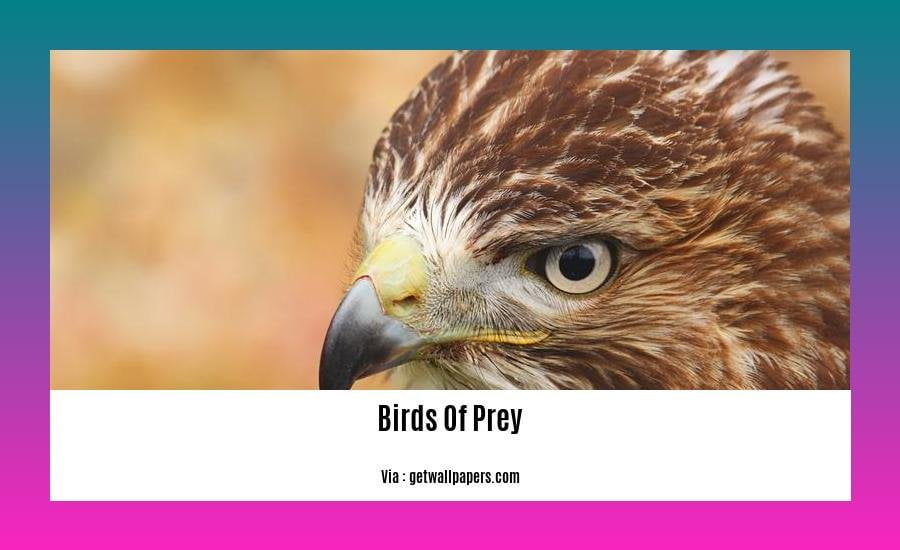
As an experienced ornithologist and wildlife enthusiast, I have had the privilege of studying the captivating world of birds of prey in their natural habitats. Central Florida, with its diverse ecosystems and abundant wildlife, provides a perfect backdrop for observing and documenting these majestic creatures. In this section, we will delve into the habitats and nesting behaviors of birds of prey in the region, exploring their unique adaptations and the crucial role they play in maintaining the delicate balance of this ecosystem.
The Importance of Habitat for Birds of Prey
The habitats that birds of prey choose for nesting and foraging are essential for their survival. In Central Florida, these habitats range from dense forests to open grasslands, wetlands, and coastal areas. Each species of bird of prey has specific habitat preferences based on their ecological needs and hunting strategies.
The availability of suitable nesting sites is a crucial factor in the selection of a habitat by birds of prey. These nesting sites can vary from tall trees, cliffs, and even abandoned buildings. Birds of prey invest a significant amount of time and effort into constructing and maintaining their nests, as they serve as a safe haven for raising their young. Protecting and preserving these nesting sites is essential for the long-term survival of these magnificent creatures.
Nesting Behaviors of Birds of Prey
The nesting behaviors of birds of prey in Central Florida exhibit intriguing variations across species. Some birds of prey are solitary nesters, while others form small colonies. Let’s explore some of the unique nesting behaviors exhibited by these remarkable creatures:
Solitary Nesters: Species such as the Bald Eagle and Great Horned Owl prefer solitary nesting, establishing their nests in secluded locations away from other birds of prey. These nests are often situated high up in tall trees or on cliffs, providing a vantage point for these birds to monitor their surroundings and protect their young.
Colonial Nesters: Other birds of prey, like the Black Vulture and the Crested Caracara, exhibit colonial nesting behavior. These species form nesting colonies where multiple pairs build their nests in close proximity. These colonies can range in size from a few pairs to thousands of individuals. Colonial nesting offers benefits such as increased protection from predators and shared information about food sources.
Burrow Nesters: The Burrowing Owl, as the name suggests, excavates burrows in sandy soil for nesting. These owls create a complex network of interconnected burrows, offering protection for their young from both predators and extreme weather conditions. Burrowing owls are known for their unique behavior of placing animal dung near the entrances of their burrows, which helps attract insects that serve as a food source for their chicks.
The Impact of Prey Availability on Habitat Selection
Research conducted in western Switzerland shed light on the influence of prey availability on habitat selection by barn owls during the non-breeding period[^1]. This study revealed that prey availability can significantly influence the habitat preference of birds of prey. Different prey densities in various habitat categories led to changes in habitat selection between the breeding and non-breeding periods[^5].
Understanding the availability of prey species within different habitats is vital for the conservation of birds of prey. Changes in prey populations, such as fluctuations in voles and small mammals, can impact the distribution and behavior of birds of prey. Conservation efforts must take into account the preservation and restoration of suitable habitats that provide ample prey resources for these magnificent creatures.
Key Takeaways:
- Birds of prey in Central Florida exhibit unique adaptations and behaviors suited to their specific habitats and prey preferences.
- Suitable nesting sites are crucial for the survival and reproduction of birds of prey, and their preservation is vital.
- Birds of prey in Central Florida display both solitary and colonial nesting behaviors, depending on their species.
- Some birds of prey, like the Burrowing Owl, opt for burrows as their nesting sites, providing protection from predators and extreme weather conditions.
- Prey availability plays a significant role in the habitat selection and distribution of birds of prey, emphasizing the importance of maintaining diverse and healthy prey populations in their habitats.
Sources:
[^1]: Influence of prey availability on habitat selection during the non-breeding period
Conservation Challenges Facing Central Florida’s Raptors
Raptors, also known as birds of prey, are facing conservation challenges in central Florida. These magnificent creatures, such as Bald Eagles, play a crucial role in maintaining the health and balance of the region’s diverse ecosystems. However, several factors threaten their survival and the preservation of their habitats.
Habitat Loss and Fragmentation
One of the major conservation challenges facing central Florida’s raptors is habitat loss and fragmentation. As the human population continues to grow and urban areas expand, natural habitats that these birds depend on are being destroyed or fragmented. This makes it harder for raptors to find suitable nesting sites, hunting grounds, and sufficient prey populations.
Declining Prey Populations
Another significant conservation challenge is the decline in prey populations. Raptors rely on a healthy and abundant prey base to survive. However, factors such as habitat loss, pollution, and climate change have negatively impacted prey species. As prey populations decline, raptors struggle to find enough food to sustain themselves and their young.
Human-Wildlife Conflict
Human-wildlife conflict poses a threat to raptors in central Florida. As more people move into raptor habitats, conflicts arise. Raptors may be mistakenly viewed as threats to livestock or pets, leading to persecution and illegal shooting. Collisions with vehicles and power lines also pose a significant threat to raptor populations.
Climate Change
Climate change is a conservation challenge that affects raptors in central Florida. Rising temperatures, changes in precipitation patterns, and extreme weather events can disrupt raptors’ breeding, migration, and hunting patterns. These disruptions can have severe consequences for their survival and overall population dynamics.
Contaminants and Pollution
Contaminants and pollution, such as pesticides and heavy metals, pose a threat to raptors’ health and reproductive success. These toxic substances can accumulate in their bodies through prey consumption, leading to decreased fertility, weakened immune systems, and impaired breeding success.
Invasive Species
Invasive species also pose a conservation challenge to central Florida’s raptors. Non-native species can compete with native prey species or disrupt the delicate balance of ecosystems. This can have a cascading effect on the availability of prey for raptors and ultimately impact their survival.
The Importance of Conservation Efforts
To address these conservation challenges, it is crucial to implement measures that protect and restore the habitats of central Florida’s raptors. Conservation organizations, such as the Audubon Center for Birds of Prey, play a vital role in raising awareness, conducting research, and implementing conservation programs. Collaborative efforts between conservation organizations, government agencies, and local communities are essential to ensure the long-term survival of these magnificent birds.
Key Takeaways:
- Habitat loss and fragmentation pose significant conservation challenges for central Florida’s raptors.
- Declining prey populations impact the survival and reproductive success of these birds.
- Human-wildlife conflict, climate change, contaminants, pollution, and invasive species also threaten raptor populations.
- Conservation efforts are crucial to preserving the habitats and ensuring the survival of central Florida’s raptors.
Sources:
– Audubon Center for Birds of Prey: Raptor Conservation
– Florida Fish and Wildlife Conservation Commission: A Guide to Dealing with Aggressive Raptors
Importance of Preserving Habitats for the Survival of Birds of Prey
Birds of Prey’s Role in Ecosystems
Birds of prey, also known as raptors, play a crucial role in ecosystems. They control pest populations, maintain animal population health, and warn about environmental toxins. Their presence and behavior serve as indicators of ecosystem health in Florida[^1].
Preserving Biodiversity and Ecosystem Health
Protecting bird habitats is essential for preserving biodiversity, promoting overall ecosystem health, and ensuring the survival of bird species. Bird habitats provide resources and shelter for various species, including raptors[^2].
Bird Habitats as Natural Carbon Storage
Bird habitats in Central Florida have been identified as important for reducing greenhouse emissions. They can store and sequester carbon, contributing to climate change mitigation[^3].
Influence of Prey Availability on Birds of Prey
The availability of prey, particularly prey densities, greatly affects birds of prey that specialize in feeding on small mammals. Changes in prey densities can impact the behavior and habitat selection of these raptors[^4].
Importance of Complex Habitats for Prey Survival
Complex habitats, such as forests and hedges, contribute to prey survival by providing cover and reducing predation pressure. These habitats create a favorable environment for both raptors and their prey[^5].
Key Takeaways:
– Birds of prey play a vital role in maintaining the health and balance of Florida’s ecosystems by controlling pest populations and indicating overall ecosystem health[^1].
– Protecting bird habitats is crucial for preserving biodiversity, promoting ecosystem health, and ensuring the survival of bird species, including raptors[^2].
– Bird habitats can also serve as natural carbon storage, contributing to climate change mitigation[^3].
– Prey availability, such as prey densities, greatly influences the behavior and habitat selection of birds of prey that specialize in feeding on small mammals[^4].
– Complex habitats, such as forests and hedges, provide cover and reduce predation pressure, benefiting both raptors and their prey[^5].
Sources:
[^1]: Audubon Center for Birds of Prey: Raptor Conservation
[^2]: Hummingbirds Plus: Importance of Bird Habitats
[^3]: National Audubon Society: Bird Habitats as Carbon Storage
[^4]: Movement Ecology: Influence of Prey Availability on Habitat Selection
[^5]: Nature: Importance of Complex Habitats for Prey Survival
FAQ
Q1: What are some examples of birds of prey found in Central Florida?
A1: Some examples of birds of prey found in Central Florida include the American Kestrel, Bald Eagle, Barred Owl, Black Vulture, Broad-winged Hawk, Cooper’s Hawk, Golden Eagle, Great Horned Owl, Peregrine Falcon, Crested Caracara, Mississippi Kite, Burrowing Owl, and Barn Owl[^1][^2].
Q2: What is the role of raptors as indicators of ecosystem health in Florida?
A2: Raptors, including birds of prey, act as indicators of ecosystem health in Florida. Their presence and behavior can provide valuable insights into the overall well-being of the environment[^1].
Q3: How has the Bald Eagle population in Central Florida changed over time?
A3: The number of Bald Eagles nesting in Central Florida ecosystems today actually exceeds the entire population of eagles in the lower 48 states. This increase highlights successful conservation efforts and the positive impact they have had on the raptor population[^1].
Q4: What laws protect Florida raptors and their habitats?
A4: All Florida raptors, including their nests and eggs, are protected under the federal Migratory Bird Treaty Act and Florida state law. These laws ensure the preservation and well-being of these birds and their habitats[^3].
Q5: What is the role of the Audubon Center for Birds of Prey in conserving Florida raptors?
A5: The Audubon Center for Birds of Prey serves as a sanctuary for over 50 non-releasable raptors in Florida. Each bird acts as an ambassador for its species, raising awareness about the importance of conservation and the threats facing raptors[^2].
